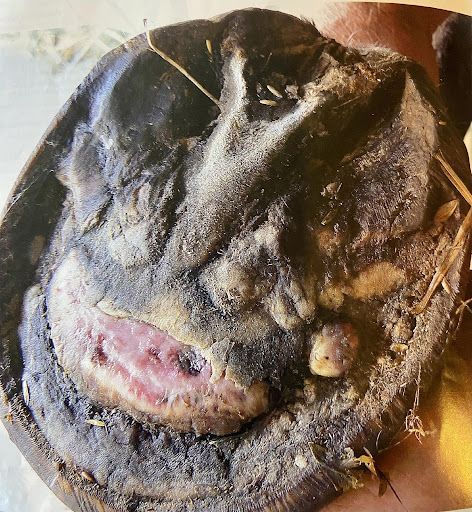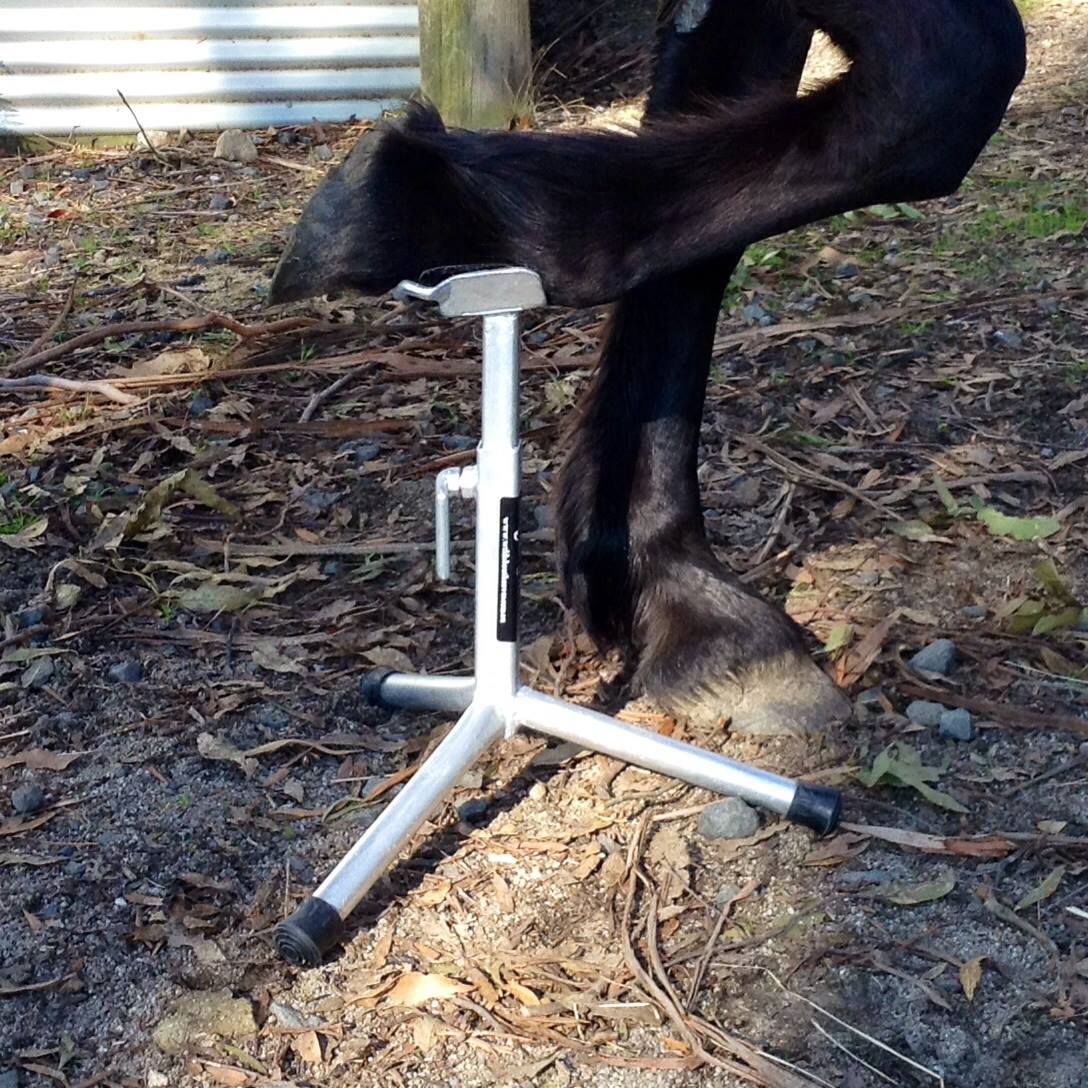INTRODUCING THE NEW WILD HOOF STAND
Wild About Hooves • 18 August 2014
VIDEO DEMO: https://youtu.be/tmc60BuGtqY
Designed by professional trimmers in the field who’ve “road tested” all the hoof stands in the market. This stand aims to make trimming really EASY.
Its “Horse Endorsed” too. Trialled by every size and make of horse – its customized to suit them all. (Shetlands to Clydesdales) Its user friendly: Set it in position to rest the horse's hoof in the cradle and when you finish underneath then push or kick it into position to put the hoof forward. Its lightweight and its tough – kick and knock it about – its designed to be your “work horse” and SAVE YOUR BACK. It works a “treat” on uneven terrain too. An asset for your trim kit. Price $175 postage around Australia add $25.
Dimensions – at its highest (with cradle raised) the WILD hoof stand is 500mm. At its lowest position, it is 300mm. And when the hoof is taken forward onto any of the tripod sections they measure in at 375mm.
This stand was designed and created by Jeremy Ford when he hurt his back earlier in the year. As a farrier who never used a hoof stand, he designed one that he is happy to work with or work for him.
It’s simple to use, no changing parts, robust and lightweight, affordable and best of all, the Horses/ponies/donkeys love it. After all- they are the number one “PRODUCT CRITIC”.

Laminitis kills thousands of horses every year, and leaves thousands of others debilitated with lameness. It will and can affect any horse. And for you, the horse owner it can be devastating: you feel guilty and heartbroken at your horses suffering, confused with all the information as it is typically explained by professionals in scientific terms that can be difficult to understand, costly veterinary bills and you have the major task of nursing your horse back to recovery. . Unseasonal weather patterns around Australia with abundant rain and sunshine saw laminitis at a near epidemic last year. The reason being, that the environmental conditions can trigger increases in the sugar, starch and fructan. These collectively known as non-structural carbohydrates can cause laminitis in any horse or pony. Alarm bells ring this spring!! Be warned and be prepared, for prevention is better than cure.

The extraordinary relationship between humans and the horse has been running since before the birth of Christ. Indeed, there is evidence our domestication of horses goes as far back as 3500 BC. And ever since we recognised the utilitarian value of the horse, there has been the horseshoe. The use of horseshoes has become an almost unquestioned tradition. Humans have been nailing shoes onto horses’ hooves for well over a thousand years. Who can remember back to a time otherwise?

